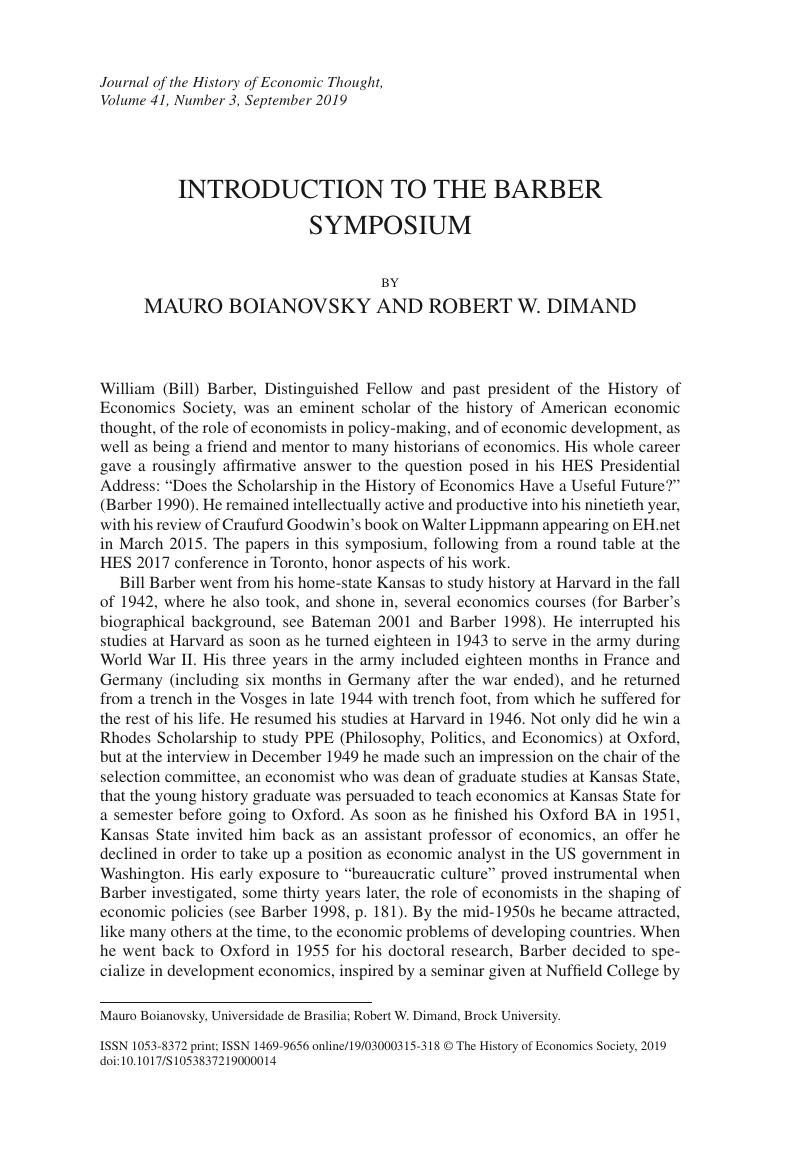Crossref Citations
This article has been cited by the following publications. This list is generated based on data provided by Crossref.
Duarte, Pedro Garcia
and
Hurtado, Jimena
2019.
JHET INTERVIEWS SERIES: AN EDITORIAL INTRODUCTION.
Journal of the History of Economic Thought,
Vol. 41,
Issue. 4,
p.
593.



